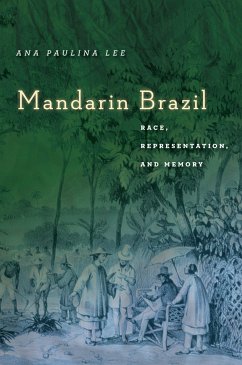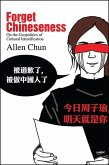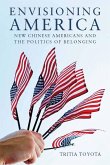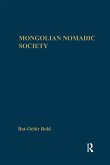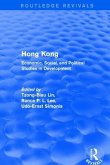- Broschiertes Buch
- Merkliste
- Auf die Merkliste
- Bewerten Bewerten
- Teilen
- Produkt teilen
- Produkterinnerung
- Produkterinnerung
Ana Paulina Lee is Assistant Professor of Luso-Brazilian Studies at Columbia University.
Andere Kunden interessierten sich auch für
![Forget Chineseness Forget Chineseness]() Allen ChunForget Chineseness40,99 €
Allen ChunForget Chineseness40,99 €![Demanding Justice and Security Demanding Justice and Security]() Demanding Justice and Security55,99 €
Demanding Justice and Security55,99 €![Envisioning America Envisioning America]() Tritia ToyotaEnvisioning America27,99 €
Tritia ToyotaEnvisioning America27,99 €![Here, There, and Elsewhere Here, There, and Elsewhere]() Tahseen ShamsHere, There, and Elsewhere30,99 €
Tahseen ShamsHere, There, and Elsewhere30,99 €![Aspiring to Home Aspiring to Home]() Bakirathi ManiAspiring to Home37,99 €
Bakirathi ManiAspiring to Home37,99 €![Mongolian Nomadic Society Mongolian Nomadic Society]() Bat-Ochir BoldMongolian Nomadic Society33,99 €
Bat-Ochir BoldMongolian Nomadic Society33,99 €![Hong Kong Hong Kong]() Tzong-Biau LinHong Kong67,99 €
Tzong-Biau LinHong Kong67,99 €-
-
-
Ana Paulina Lee is Assistant Professor of Luso-Brazilian Studies at Columbia University.
Hinweis: Dieser Artikel kann nur an eine deutsche Lieferadresse ausgeliefert werden.
Hinweis: Dieser Artikel kann nur an eine deutsche Lieferadresse ausgeliefert werden.
Produktdetails
- Produktdetails
- Verlag: Stanford University Press
- Seitenzahl: 256
- Erscheinungstermin: 18. September 2018
- Englisch
- Abmessung: 226mm x 149mm x 17mm
- Gewicht: 398g
- ISBN-13: 9781503606012
- ISBN-10: 1503606015
- Artikelnr.: 48858031
- Herstellerkennzeichnung
- Produktsicherheitsverantwortliche/r
- Europaallee 1
- 36244 Bad Hersfeld
- gpsr@libri.de
- Verlag: Stanford University Press
- Seitenzahl: 256
- Erscheinungstermin: 18. September 2018
- Englisch
- Abmessung: 226mm x 149mm x 17mm
- Gewicht: 398g
- ISBN-13: 9781503606012
- ISBN-10: 1503606015
- Artikelnr.: 48858031
- Herstellerkennzeichnung
- Produktsicherheitsverantwortliche/r
- Europaallee 1
- 36244 Bad Hersfeld
- gpsr@libri.de
Ana Paulina Lee is Assistant Professor of Luso-Brazilian Studies at Columbia University.
Contents and Abstracts
Introduction: Circumoceanic Memory: Chinese Racialization in Brazilian
Perspective
chapter abstract
This chapter lays out the book's main theoretical framework, circumoceanic
memory, and discusses the book's methodology for compiling an archive of
Chinese racialization. It contextualizes Chinese racialization within the
history of slavery's racial regimes. Drawing on critical race and cultural
memory studies, it explores how Chinese racialization overlaps with other
processes of racialization such as whiteness and blackness. It disentangles
racial and eugenic ideology from liberal ideology to examine how
discussions about race, free labor, and liberty became coterminous in
defining Brazilian national identity as an aspect of an emerging global,
racialized national consciousness.
1Brazil's Oriental Past and Future
chapter abstract
This chapter investigates the Portuguese conceptual framework regarding
China and shows how these perceptions changed during Brazil's colonial
period in relation to the trade in Oriental material goods and Asian labor.
Beginning in the sixteenth century, the Portuguese empire established a
global trade route that linked the economies and cultures of Asia, Africa,
Europe, and the Americas. This chapter examines multilateral economic and
political interests as well as mutual acts of cultural appropriation such
as those that occurred in the trade in porcelain, export porcelain, and
chinoiserie decor. It explores how the trade in foreign luxury items
circulated images and motifs about Asia and Europe to Asian and European
consumers alike. This chapter argues that the global trade in foreign
luxury goods that also trafficked in human labor played a critical role in
shaping racialized ideas about exploitable and disposable labor.
2Emancipation to Immigration
chapter abstract
This chapter analyzes the developments that led Chinese laborers to Brazil,
through analyzing documents written by late Qing dynasty diplomats and
officials who traveled to Brazil to open up Chinese immigration routes.
Qing officials used a word for immigration that had a synonymous meaning
with colonization (yizhi). Brazil, to them, presented a viable option for
both due to its vast territory and inclusive citizenship laws. The chapter
discusses late Qing officials' concerns in opening immigration and trade
routes between China and Brazil in relation to Brazilian abolitionists'
preoccupations with emancipation, national independence, and the new
nation's desire to whiten its racial makeup. This chapter also explores the
cultural work that illustrations about Qing dynasty officials served,
including caricatures of mandarins that appeared in abolitionist print
journals.
3Performing Yellowface and Chinese Labor
chapter abstract
This chapter examines fin-de-siècle Rio de Janeiro vaudeville and the
carnivalesque constructions of yellowface performance. Arthur Azevedo,
arguably the most renowned playwright in Brazilian theatrical history,
declared that theater was not purely about entertainment; it was also a
critical site to deliberate citizenship and nation. Azevedo used the genre
of vaudeville to turn Rio de Janeiro into a topsy-turvy world where race,
gender, and sexuality were in flux. This chapter maps instances in which
the fictional portrayals of mandarins transposed the visits of late Qing
officials. These plays used satire as a form of political contestation
aimed at divesting from Chinese immigration, which the playwrights
portrayed as a new mode of labor colonization. The stage conveyed fears
about the perceived threat that Chinese labor would usher in a new era of
unfree "yellow" labor and thus impede the road to racial whitening,
modernity, abolition, and national independence.
4The Chinese Question in Brazil
chapter abstract
This chapter brings together a series of wandering and fragmentary
depictions of Chinese laborers in the writings of Machado de Assis and Eça
de Queiroz. The vast majority of these chronicles have not been published
or translated into English or studied within the context of abolition and
Chinese immigration. This chapter provides a comparative reading of these
chronicles and essays, paying particular attention to the authors'
references to late Qing dynasty officials and Chinese migrants, in order to
discuss how Brazilian authors angled literary production to enter into the
global Chinese question debate. The authors' writings allow us to observe
how shifting perceptions of race influenced new modes of Chinese
racialization in Brazil.
5Between Diplomacy and Fiction
chapter abstract
This chapter brings together a set of diplomatic and fictional writings by
the author/diplomats Eça de Queiroz, Aluísio Azevedo, and Luis Guimarães
Filho. While these authors are celebrated for their contributions to
Luso-Brazilian letters, they also all served as diplomats for Portugal or
Brazil and participated in debates on Chinese and Japanese immigration. I
discuss the constitutive role that their diplomatic poetics played in
shaping immigration policy and international relations between Brazil,
China, and Japan.
6The Yellow Peril in Brazilian Popular Music
chapter abstract
Brazilian popular music production functions as a specific regime of
representation and declaration, thereby sharing social, political, and
economic realities and playing a critical role in staging new imaginaries
of citizenship. Twentieth-century constructions of Chineseness in Brazilian
popular music reformulated the pseudoscience of eugenics through creating
ideas about "constructive" or "degenerative" miscegenation. Songs about
racial mixing with the Chinese were always tied to larger concerns about
Brazil's geopolitical alliances during World War II or economic alignments.
Lyrics and melodies about the Chinese negotiated ideas about Brazilian
national identity and mestiço nationalism wherein we can observe how music
production that depicted Chinese sexuality and gender in relation to the
figure of the mulata are bound to a Brazilian collective memory of slavery
and sexual violence, even if the origins of that past are disremembered in
national memory.
Conclusion: Imaginative Geographies of Brazil and China
chapter abstract
This chapter ties together the main themes of the book regarding
Sino-Portuguese trade, the African slave trade, Chinese (Asiatic labor),
and Brazilian racial democracy in a twentieth-century context. It analyzes
how sociologist Gilberto Freyre (1900-1987) appropriated the imperialist
spatial-conceptual framework of the Orient to advance the Brazilian
national myth of racial democracy as a way of contesting white supremacist
ideology spreading around the world in places like the United States,
Europe, and South Africa. Finally, it addresses the topic of the Chinese in
Brazil today and concludes with contemporary news stories about the
continuing forms of unfree and enslaved Chinese labor in Brazil to show the
existence of ongoing modes of Chinese racialization that recapitulate old
ideas and clichés in new settings.
Introduction: Circumoceanic Memory: Chinese Racialization in Brazilian
Perspective
chapter abstract
This chapter lays out the book's main theoretical framework, circumoceanic
memory, and discusses the book's methodology for compiling an archive of
Chinese racialization. It contextualizes Chinese racialization within the
history of slavery's racial regimes. Drawing on critical race and cultural
memory studies, it explores how Chinese racialization overlaps with other
processes of racialization such as whiteness and blackness. It disentangles
racial and eugenic ideology from liberal ideology to examine how
discussions about race, free labor, and liberty became coterminous in
defining Brazilian national identity as an aspect of an emerging global,
racialized national consciousness.
1Brazil's Oriental Past and Future
chapter abstract
This chapter investigates the Portuguese conceptual framework regarding
China and shows how these perceptions changed during Brazil's colonial
period in relation to the trade in Oriental material goods and Asian labor.
Beginning in the sixteenth century, the Portuguese empire established a
global trade route that linked the economies and cultures of Asia, Africa,
Europe, and the Americas. This chapter examines multilateral economic and
political interests as well as mutual acts of cultural appropriation such
as those that occurred in the trade in porcelain, export porcelain, and
chinoiserie decor. It explores how the trade in foreign luxury items
circulated images and motifs about Asia and Europe to Asian and European
consumers alike. This chapter argues that the global trade in foreign
luxury goods that also trafficked in human labor played a critical role in
shaping racialized ideas about exploitable and disposable labor.
2Emancipation to Immigration
chapter abstract
This chapter analyzes the developments that led Chinese laborers to Brazil,
through analyzing documents written by late Qing dynasty diplomats and
officials who traveled to Brazil to open up Chinese immigration routes.
Qing officials used a word for immigration that had a synonymous meaning
with colonization (yizhi). Brazil, to them, presented a viable option for
both due to its vast territory and inclusive citizenship laws. The chapter
discusses late Qing officials' concerns in opening immigration and trade
routes between China and Brazil in relation to Brazilian abolitionists'
preoccupations with emancipation, national independence, and the new
nation's desire to whiten its racial makeup. This chapter also explores the
cultural work that illustrations about Qing dynasty officials served,
including caricatures of mandarins that appeared in abolitionist print
journals.
3Performing Yellowface and Chinese Labor
chapter abstract
This chapter examines fin-de-siècle Rio de Janeiro vaudeville and the
carnivalesque constructions of yellowface performance. Arthur Azevedo,
arguably the most renowned playwright in Brazilian theatrical history,
declared that theater was not purely about entertainment; it was also a
critical site to deliberate citizenship and nation. Azevedo used the genre
of vaudeville to turn Rio de Janeiro into a topsy-turvy world where race,
gender, and sexuality were in flux. This chapter maps instances in which
the fictional portrayals of mandarins transposed the visits of late Qing
officials. These plays used satire as a form of political contestation
aimed at divesting from Chinese immigration, which the playwrights
portrayed as a new mode of labor colonization. The stage conveyed fears
about the perceived threat that Chinese labor would usher in a new era of
unfree "yellow" labor and thus impede the road to racial whitening,
modernity, abolition, and national independence.
4The Chinese Question in Brazil
chapter abstract
This chapter brings together a series of wandering and fragmentary
depictions of Chinese laborers in the writings of Machado de Assis and Eça
de Queiroz. The vast majority of these chronicles have not been published
or translated into English or studied within the context of abolition and
Chinese immigration. This chapter provides a comparative reading of these
chronicles and essays, paying particular attention to the authors'
references to late Qing dynasty officials and Chinese migrants, in order to
discuss how Brazilian authors angled literary production to enter into the
global Chinese question debate. The authors' writings allow us to observe
how shifting perceptions of race influenced new modes of Chinese
racialization in Brazil.
5Between Diplomacy and Fiction
chapter abstract
This chapter brings together a set of diplomatic and fictional writings by
the author/diplomats Eça de Queiroz, Aluísio Azevedo, and Luis Guimarães
Filho. While these authors are celebrated for their contributions to
Luso-Brazilian letters, they also all served as diplomats for Portugal or
Brazil and participated in debates on Chinese and Japanese immigration. I
discuss the constitutive role that their diplomatic poetics played in
shaping immigration policy and international relations between Brazil,
China, and Japan.
6The Yellow Peril in Brazilian Popular Music
chapter abstract
Brazilian popular music production functions as a specific regime of
representation and declaration, thereby sharing social, political, and
economic realities and playing a critical role in staging new imaginaries
of citizenship. Twentieth-century constructions of Chineseness in Brazilian
popular music reformulated the pseudoscience of eugenics through creating
ideas about "constructive" or "degenerative" miscegenation. Songs about
racial mixing with the Chinese were always tied to larger concerns about
Brazil's geopolitical alliances during World War II or economic alignments.
Lyrics and melodies about the Chinese negotiated ideas about Brazilian
national identity and mestiço nationalism wherein we can observe how music
production that depicted Chinese sexuality and gender in relation to the
figure of the mulata are bound to a Brazilian collective memory of slavery
and sexual violence, even if the origins of that past are disremembered in
national memory.
Conclusion: Imaginative Geographies of Brazil and China
chapter abstract
This chapter ties together the main themes of the book regarding
Sino-Portuguese trade, the African slave trade, Chinese (Asiatic labor),
and Brazilian racial democracy in a twentieth-century context. It analyzes
how sociologist Gilberto Freyre (1900-1987) appropriated the imperialist
spatial-conceptual framework of the Orient to advance the Brazilian
national myth of racial democracy as a way of contesting white supremacist
ideology spreading around the world in places like the United States,
Europe, and South Africa. Finally, it addresses the topic of the Chinese in
Brazil today and concludes with contemporary news stories about the
continuing forms of unfree and enslaved Chinese labor in Brazil to show the
existence of ongoing modes of Chinese racialization that recapitulate old
ideas and clichés in new settings.
Contents and Abstracts
Introduction: Circumoceanic Memory: Chinese Racialization in Brazilian
Perspective
chapter abstract
This chapter lays out the book's main theoretical framework, circumoceanic
memory, and discusses the book's methodology for compiling an archive of
Chinese racialization. It contextualizes Chinese racialization within the
history of slavery's racial regimes. Drawing on critical race and cultural
memory studies, it explores how Chinese racialization overlaps with other
processes of racialization such as whiteness and blackness. It disentangles
racial and eugenic ideology from liberal ideology to examine how
discussions about race, free labor, and liberty became coterminous in
defining Brazilian national identity as an aspect of an emerging global,
racialized national consciousness.
1Brazil's Oriental Past and Future
chapter abstract
This chapter investigates the Portuguese conceptual framework regarding
China and shows how these perceptions changed during Brazil's colonial
period in relation to the trade in Oriental material goods and Asian labor.
Beginning in the sixteenth century, the Portuguese empire established a
global trade route that linked the economies and cultures of Asia, Africa,
Europe, and the Americas. This chapter examines multilateral economic and
political interests as well as mutual acts of cultural appropriation such
as those that occurred in the trade in porcelain, export porcelain, and
chinoiserie decor. It explores how the trade in foreign luxury items
circulated images and motifs about Asia and Europe to Asian and European
consumers alike. This chapter argues that the global trade in foreign
luxury goods that also trafficked in human labor played a critical role in
shaping racialized ideas about exploitable and disposable labor.
2Emancipation to Immigration
chapter abstract
This chapter analyzes the developments that led Chinese laborers to Brazil,
through analyzing documents written by late Qing dynasty diplomats and
officials who traveled to Brazil to open up Chinese immigration routes.
Qing officials used a word for immigration that had a synonymous meaning
with colonization (yizhi). Brazil, to them, presented a viable option for
both due to its vast territory and inclusive citizenship laws. The chapter
discusses late Qing officials' concerns in opening immigration and trade
routes between China and Brazil in relation to Brazilian abolitionists'
preoccupations with emancipation, national independence, and the new
nation's desire to whiten its racial makeup. This chapter also explores the
cultural work that illustrations about Qing dynasty officials served,
including caricatures of mandarins that appeared in abolitionist print
journals.
3Performing Yellowface and Chinese Labor
chapter abstract
This chapter examines fin-de-siècle Rio de Janeiro vaudeville and the
carnivalesque constructions of yellowface performance. Arthur Azevedo,
arguably the most renowned playwright in Brazilian theatrical history,
declared that theater was not purely about entertainment; it was also a
critical site to deliberate citizenship and nation. Azevedo used the genre
of vaudeville to turn Rio de Janeiro into a topsy-turvy world where race,
gender, and sexuality were in flux. This chapter maps instances in which
the fictional portrayals of mandarins transposed the visits of late Qing
officials. These plays used satire as a form of political contestation
aimed at divesting from Chinese immigration, which the playwrights
portrayed as a new mode of labor colonization. The stage conveyed fears
about the perceived threat that Chinese labor would usher in a new era of
unfree "yellow" labor and thus impede the road to racial whitening,
modernity, abolition, and national independence.
4The Chinese Question in Brazil
chapter abstract
This chapter brings together a series of wandering and fragmentary
depictions of Chinese laborers in the writings of Machado de Assis and Eça
de Queiroz. The vast majority of these chronicles have not been published
or translated into English or studied within the context of abolition and
Chinese immigration. This chapter provides a comparative reading of these
chronicles and essays, paying particular attention to the authors'
references to late Qing dynasty officials and Chinese migrants, in order to
discuss how Brazilian authors angled literary production to enter into the
global Chinese question debate. The authors' writings allow us to observe
how shifting perceptions of race influenced new modes of Chinese
racialization in Brazil.
5Between Diplomacy and Fiction
chapter abstract
This chapter brings together a set of diplomatic and fictional writings by
the author/diplomats Eça de Queiroz, Aluísio Azevedo, and Luis Guimarães
Filho. While these authors are celebrated for their contributions to
Luso-Brazilian letters, they also all served as diplomats for Portugal or
Brazil and participated in debates on Chinese and Japanese immigration. I
discuss the constitutive role that their diplomatic poetics played in
shaping immigration policy and international relations between Brazil,
China, and Japan.
6The Yellow Peril in Brazilian Popular Music
chapter abstract
Brazilian popular music production functions as a specific regime of
representation and declaration, thereby sharing social, political, and
economic realities and playing a critical role in staging new imaginaries
of citizenship. Twentieth-century constructions of Chineseness in Brazilian
popular music reformulated the pseudoscience of eugenics through creating
ideas about "constructive" or "degenerative" miscegenation. Songs about
racial mixing with the Chinese were always tied to larger concerns about
Brazil's geopolitical alliances during World War II or economic alignments.
Lyrics and melodies about the Chinese negotiated ideas about Brazilian
national identity and mestiço nationalism wherein we can observe how music
production that depicted Chinese sexuality and gender in relation to the
figure of the mulata are bound to a Brazilian collective memory of slavery
and sexual violence, even if the origins of that past are disremembered in
national memory.
Conclusion: Imaginative Geographies of Brazil and China
chapter abstract
This chapter ties together the main themes of the book regarding
Sino-Portuguese trade, the African slave trade, Chinese (Asiatic labor),
and Brazilian racial democracy in a twentieth-century context. It analyzes
how sociologist Gilberto Freyre (1900-1987) appropriated the imperialist
spatial-conceptual framework of the Orient to advance the Brazilian
national myth of racial democracy as a way of contesting white supremacist
ideology spreading around the world in places like the United States,
Europe, and South Africa. Finally, it addresses the topic of the Chinese in
Brazil today and concludes with contemporary news stories about the
continuing forms of unfree and enslaved Chinese labor in Brazil to show the
existence of ongoing modes of Chinese racialization that recapitulate old
ideas and clichés in new settings.
Introduction: Circumoceanic Memory: Chinese Racialization in Brazilian
Perspective
chapter abstract
This chapter lays out the book's main theoretical framework, circumoceanic
memory, and discusses the book's methodology for compiling an archive of
Chinese racialization. It contextualizes Chinese racialization within the
history of slavery's racial regimes. Drawing on critical race and cultural
memory studies, it explores how Chinese racialization overlaps with other
processes of racialization such as whiteness and blackness. It disentangles
racial and eugenic ideology from liberal ideology to examine how
discussions about race, free labor, and liberty became coterminous in
defining Brazilian national identity as an aspect of an emerging global,
racialized national consciousness.
1Brazil's Oriental Past and Future
chapter abstract
This chapter investigates the Portuguese conceptual framework regarding
China and shows how these perceptions changed during Brazil's colonial
period in relation to the trade in Oriental material goods and Asian labor.
Beginning in the sixteenth century, the Portuguese empire established a
global trade route that linked the economies and cultures of Asia, Africa,
Europe, and the Americas. This chapter examines multilateral economic and
political interests as well as mutual acts of cultural appropriation such
as those that occurred in the trade in porcelain, export porcelain, and
chinoiserie decor. It explores how the trade in foreign luxury items
circulated images and motifs about Asia and Europe to Asian and European
consumers alike. This chapter argues that the global trade in foreign
luxury goods that also trafficked in human labor played a critical role in
shaping racialized ideas about exploitable and disposable labor.
2Emancipation to Immigration
chapter abstract
This chapter analyzes the developments that led Chinese laborers to Brazil,
through analyzing documents written by late Qing dynasty diplomats and
officials who traveled to Brazil to open up Chinese immigration routes.
Qing officials used a word for immigration that had a synonymous meaning
with colonization (yizhi). Brazil, to them, presented a viable option for
both due to its vast territory and inclusive citizenship laws. The chapter
discusses late Qing officials' concerns in opening immigration and trade
routes between China and Brazil in relation to Brazilian abolitionists'
preoccupations with emancipation, national independence, and the new
nation's desire to whiten its racial makeup. This chapter also explores the
cultural work that illustrations about Qing dynasty officials served,
including caricatures of mandarins that appeared in abolitionist print
journals.
3Performing Yellowface and Chinese Labor
chapter abstract
This chapter examines fin-de-siècle Rio de Janeiro vaudeville and the
carnivalesque constructions of yellowface performance. Arthur Azevedo,
arguably the most renowned playwright in Brazilian theatrical history,
declared that theater was not purely about entertainment; it was also a
critical site to deliberate citizenship and nation. Azevedo used the genre
of vaudeville to turn Rio de Janeiro into a topsy-turvy world where race,
gender, and sexuality were in flux. This chapter maps instances in which
the fictional portrayals of mandarins transposed the visits of late Qing
officials. These plays used satire as a form of political contestation
aimed at divesting from Chinese immigration, which the playwrights
portrayed as a new mode of labor colonization. The stage conveyed fears
about the perceived threat that Chinese labor would usher in a new era of
unfree "yellow" labor and thus impede the road to racial whitening,
modernity, abolition, and national independence.
4The Chinese Question in Brazil
chapter abstract
This chapter brings together a series of wandering and fragmentary
depictions of Chinese laborers in the writings of Machado de Assis and Eça
de Queiroz. The vast majority of these chronicles have not been published
or translated into English or studied within the context of abolition and
Chinese immigration. This chapter provides a comparative reading of these
chronicles and essays, paying particular attention to the authors'
references to late Qing dynasty officials and Chinese migrants, in order to
discuss how Brazilian authors angled literary production to enter into the
global Chinese question debate. The authors' writings allow us to observe
how shifting perceptions of race influenced new modes of Chinese
racialization in Brazil.
5Between Diplomacy and Fiction
chapter abstract
This chapter brings together a set of diplomatic and fictional writings by
the author/diplomats Eça de Queiroz, Aluísio Azevedo, and Luis Guimarães
Filho. While these authors are celebrated for their contributions to
Luso-Brazilian letters, they also all served as diplomats for Portugal or
Brazil and participated in debates on Chinese and Japanese immigration. I
discuss the constitutive role that their diplomatic poetics played in
shaping immigration policy and international relations between Brazil,
China, and Japan.
6The Yellow Peril in Brazilian Popular Music
chapter abstract
Brazilian popular music production functions as a specific regime of
representation and declaration, thereby sharing social, political, and
economic realities and playing a critical role in staging new imaginaries
of citizenship. Twentieth-century constructions of Chineseness in Brazilian
popular music reformulated the pseudoscience of eugenics through creating
ideas about "constructive" or "degenerative" miscegenation. Songs about
racial mixing with the Chinese were always tied to larger concerns about
Brazil's geopolitical alliances during World War II or economic alignments.
Lyrics and melodies about the Chinese negotiated ideas about Brazilian
national identity and mestiço nationalism wherein we can observe how music
production that depicted Chinese sexuality and gender in relation to the
figure of the mulata are bound to a Brazilian collective memory of slavery
and sexual violence, even if the origins of that past are disremembered in
national memory.
Conclusion: Imaginative Geographies of Brazil and China
chapter abstract
This chapter ties together the main themes of the book regarding
Sino-Portuguese trade, the African slave trade, Chinese (Asiatic labor),
and Brazilian racial democracy in a twentieth-century context. It analyzes
how sociologist Gilberto Freyre (1900-1987) appropriated the imperialist
spatial-conceptual framework of the Orient to advance the Brazilian
national myth of racial democracy as a way of contesting white supremacist
ideology spreading around the world in places like the United States,
Europe, and South Africa. Finally, it addresses the topic of the Chinese in
Brazil today and concludes with contemporary news stories about the
continuing forms of unfree and enslaved Chinese labor in Brazil to show the
existence of ongoing modes of Chinese racialization that recapitulate old
ideas and clichés in new settings.

